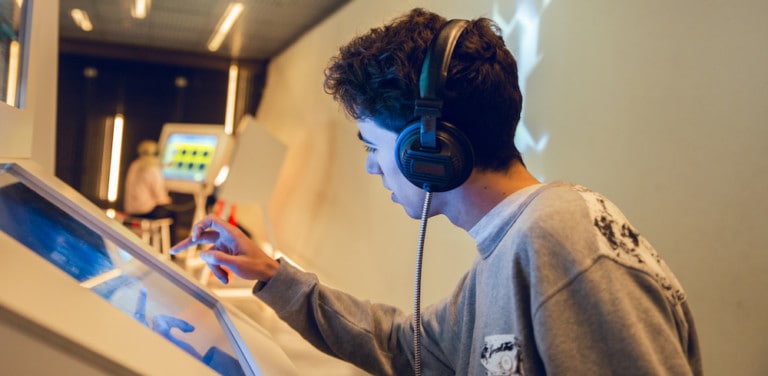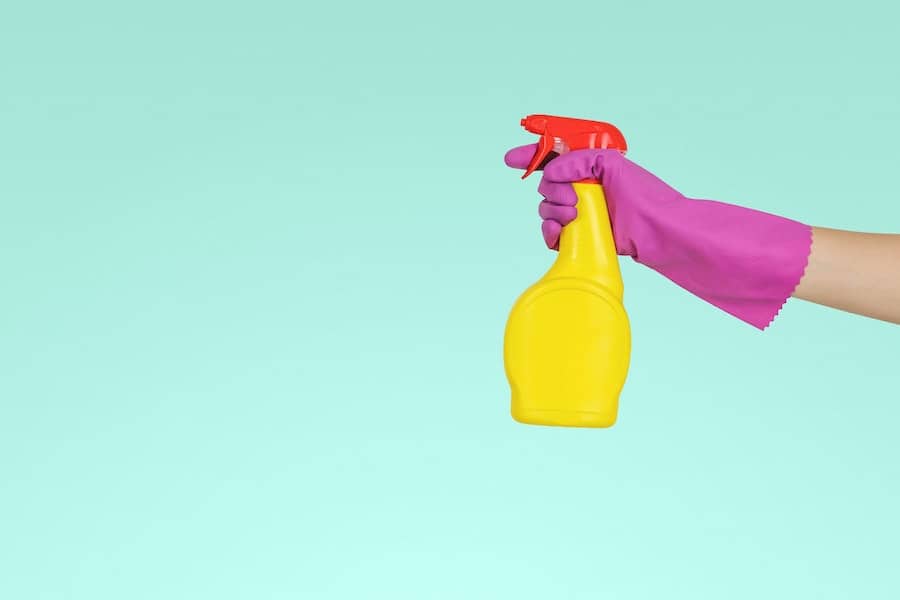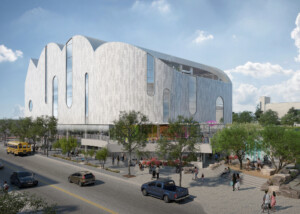In the second blog post in this series, Barco explores how technology can be used to make museums safe spaces in a post-COVID world.
by Barco
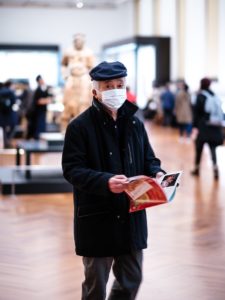
Have you noticed how we all seem to have become so much more aware of our precious private bubble these last months? It’s that red alert that briefly goes off in your head when someone comes too close with their shopping cart in the supermarket, or the momentary reluctant feeling when you need to press the stop button on the bus.
For public spaces and venue attractions, the pandemic means they’ll have to rethink their entire visitor journey to make visitors feel secure. Museums too.
Time-slotted tickets that you buy online, a controlled visitor flow in the building and disinfection columns around every corner – it’s a start. But there’s more. With technology as their ally, museums are changing their ways to create a safe and welcoming environment for their guests.
This is the second in a series of blog posts based on a conversation that the Barco team had with a number of leaders in the museum sector. These experts are Arnold van de Water, partner at Factorr and general manager of the Meet Vincent van Gogh Experience for the Van Gogh Museum; Dave Patten, head of new media at The Science Museum, London; global thought leader, speaker, creative strategist, founder and director of Molten Immersive Art, Dorothy Di Stefano and Hilary McVicker, communicatrix at The Elumenati.
In this post, Barco looks at the creativity of the museum industry in its search for technology that will support the post-COVID museum visit.
Museum technology post-COVID
In the past, the museum industry has undergone a big transformation from passive to interactive experiences. In our museum e-book from last year (“How to future-proof your museum?”), Barco already mentioned the #musetech trend. There is an increasing number of museums utilizing new technologies to build such unique and immersive experiences.
Curators are exploring new solutions that still enable involvement, immersive storytelling and unique experiences
Then, enter 2020. The situation has changed. But the importance of musetech has not. And so curators are exploring new solutions that still enable involvement, immersive storytelling and unique experiences.
Please don’t touch
Tactile exhibitions with hands-on activities and touchscreens are/were used to engage visitors in a memorable experience. By integrating one of our primary instincts (touch) in exhibitions, museums trigger the curiosity of their visitors and enable a deeper understanding of the story.
But touch is a tricky thing to promote these days. Post-COVID, the time may be right to explore the potential of gesture-based tools and technologies in museums.
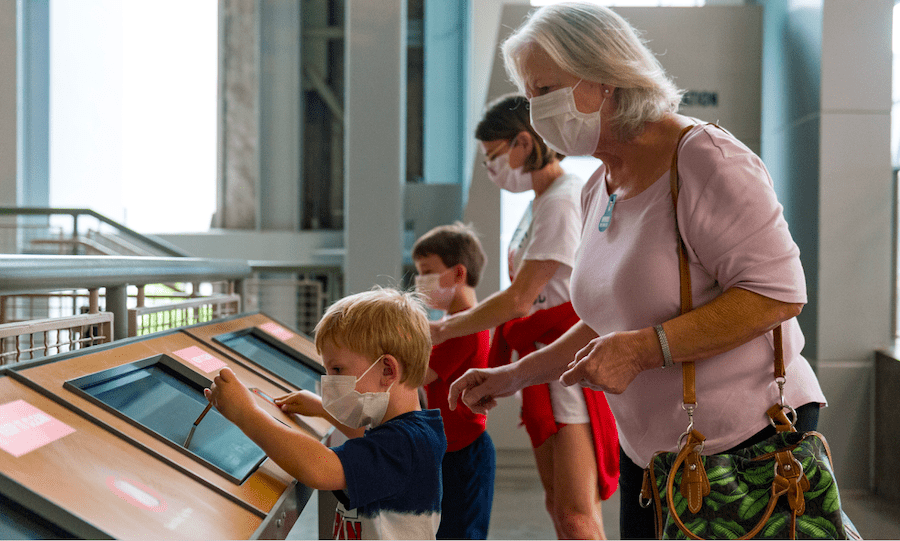
“We’ve been approached by several parties about touchless interfaces,” says McVicker from Eluminati, a design and engineering firm creating innovative solutions for immersive visualization.
There are still some doubts and hesitations surrounding touchless equipment. After all, don’t we all have that little inner rebel that still wants to touch, even though a sign friendly warns us not to? But McVicker believes that “COVID is going to be the impetus to move forward and develop these technologies to make them applicable for museums.”
Hygiene on display
You can try to build contactless experiences, but sometimes it’s just impossible. Then it comes down to cleaning. As mentioned in our previous post, the visibility of cleaning and hygiene will be extremely important in the future. And again, technology can play an important role in the post-COVID museum space.
During the crisis, multiple companies have launched cleaning devices based on ultraviolet light technology. Studies are still running, but it’s been confirmed that UV radiation can be used to reduce the spread of bacteria on surfaces and inactivate viruses similar to COVID-19.
These UV disinfection technologies are being applied to clean shopping carts, healthcare equipment and even fire trucks. Museums could use it to sanitize several useful objects. For instance, wearables, audio guides or other shared tools that are being used to interact with museum visitors.
BYOD
And a final example of coronaproof museum technology is the use of mobile apps. These allow visitors to still get that immersive and interactive experience without relying on shared devices. Instead, they are able to use their own devices as an audio guide or augmented reality tool.
“We did some research in the past looking at how people use phones in and out of museums. The barriers are many and people are not that keen on using them, I suspect this might change” says Patten.
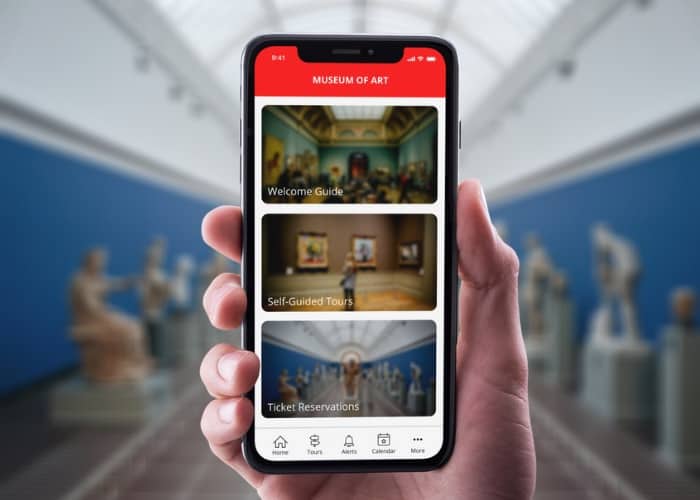
“It’s the one thing that is yours. You know it’s safe because only you were touching it. We built some exhibits in the past with interfaces on mobile phones, and it’s one thing we’ve got listed to test again when getting back into the museum.”
Challenging times ask for creative solutions
Inventiveness is a survival skill. Challenging times ask for creative solutions, and museums have shown that they understand this. Van de Water says: “There’s so much innovation going on right now, and I like it! It really shows the resilience of our industry.”
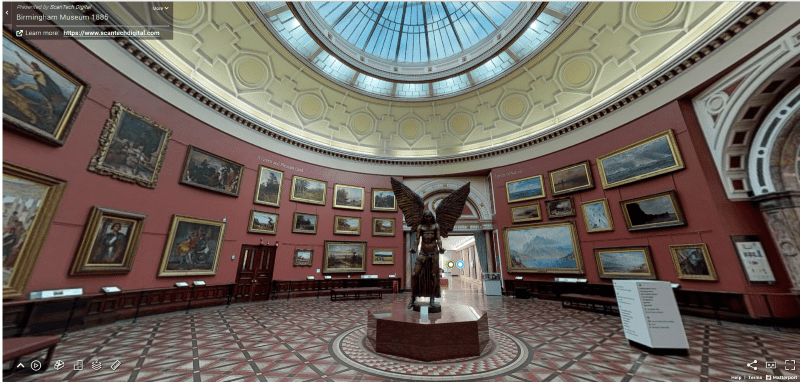
One technology solution for a post-COVID world that we didn’t touch upon in this post is the virtual museum visit. But these technologies were extremely important during the pandemic. In the next episode of this series, we’ll talk some more about how museums are breaking down their physical walls. We’ll also look at the online experiences of our panellists.
Read last week’s post, on reopening museums after the pandemic, here.
